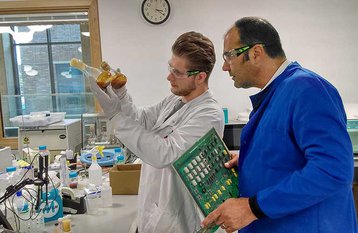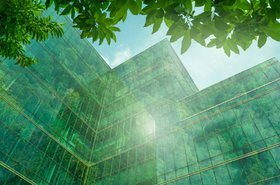Colt Technology Services has been evaluating an e-waste solution which uses microbes and living organisms to extract precious metals.
The bioleaching process, developed by Coventry University and IT recycling specialist N2S, can capture precious metals like gold and copper which are in electronic waste, so they can be reused instead of going to landfill. Colt has been involved in a six month trial of the idea.
Bugs retrieve metals
“Using our unique biotechnology process, we can extract large amounts of rare earth and precious metals such as gold and copper – sometimes up to 40 percent of a technology circuit board is made of copper," said Steve Morris, N2S managing director. "These metals can then be re-introduced into the manufacturing process to create a circular economy.”
The idea was developed from an inspiration within N2S, a 20 year-old family-led firm: "Initially, the thought came from a story that I heard about from South Africa," explained Jack Gomersall, founder and chairman of N2S in a 2019 video. "There was a slag heap of iron ore, and then one day, somebody saw this brown liquid running out and found it to be copper. So in some way, this copper was being leached from this iron ore."
Gomersall spoke to Professor Sebastien Farnaud at Coventry University, to explore how to use a similar process to extract precious metals from PCBs, and N2S became the first company in the UK to extract precious metals using bioleaching.
Bioleaching is far less environmentally harmful and energy-intensive than other ways to extract metals from e-waste. It also produces no air pollution, unlike other extraction methods, such as smelting and incineration, which result in significant greenhouse gas emissions.
To prepare the waste for bioleaching, it is ball-milled to a powder. Non-metallic elements are removed, and an inductively coupled plasma-atomic emission spectrometer (ICP-AES) identifies how much precious metal is contained in the remaining waste. The leaching takes place in a water solution.
“Sustainability is a central element of our strategy," said Caroline Griffin Pain, Colt’s General Counsel and EVP, HR. "Within this, circular economy is key. When we replace a piece of old equipment within our business, we look at how we can keep it out of landfill and ideally within the value chain, to produce less waste overall. As a result, we’re investigating the viability of using bioleaching to recover precious metals from our own equipment, in partnership with N2S, and will be evaluating the results as we near the end of the trial.”
“It’s been really exciting to work with Colt to redefine the technology lifecycle," said Morris. "We are running this trial to help them understand what is contained in their end-of-life network and data center equipment and see how it can be managed more sustainably."
Bury St Edmunds-based N2S recycles some 250,000 IT devices per year, and employs 100 people. It argues for a zero-to-landfill policy in which every part of waste equipment is recovered, recycled, reformed, or restored for re-use.




